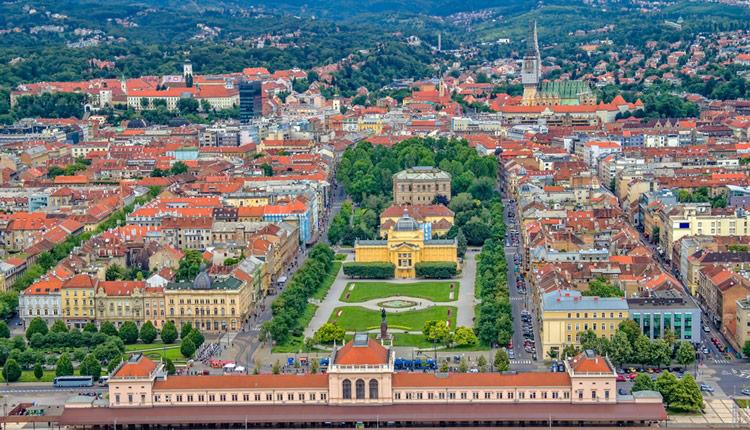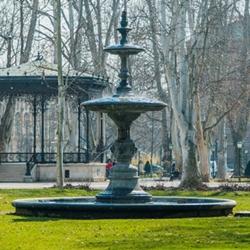Where does the name come from?
Lenuci’s Horseshoe is a system of seven squares connected by parks and a botanical garden, which are all placed in Zagreb’s Lower Town (Donji grad). It gets its name from Milan Lenuci, a Croatian urbanist, who was one of the most influential people to be charged with developing the plan of Zagreb and its parks in the second half of the 19th century. Lenuci designed the system of parks to be shaped like a letter "U" and it’s almost reminiscent of a horseshoe – hence the name! ????
Who are the squares named after?
Six out of seven squares in Lenuci’s Horseshoe are named after famous men from Croatian history:
Kralj Tomislav (King Tomislav) was the first king of Croatia who reigned from 925 until 928.
Marko Marulić (18. August 1450 – 5. January 1524) was a Croatian national poet and Renaissance humanist.
Nikola Šubić Zrinski (1508 – 7. September 1566) was a Count and one of the biggest icons of Croatian and Hungarian history.
Ivan Mažuranić (11. August 1814 – 4. August 1890) was a Croatian poet, linguist, lawyer and politician who is considered one of the most important figures in Croatia's political and cultural life in the mid-19th century.
Josip Juraj Strossmayer (4. February 1815 – 8. May 1905) was a Croatian politician, bishop and founder of the Yugoslavian Academy of Science and Arts.
Ante Starčević (23. May 1823 – 28. February 1896) was a Croatian politician and writer who is known as the Father of the Homeland because of his ideas of Croatian nationalism.

Lenuci horseshoe is a complex of seven squares and parks in central Zagreb
Squares and parks of Lenuci’s horseshoe
Although there’s something interesting to be said about all of the squares of Lenuci’s horseshoe, three of them really stand out.
The square of King Tomislav, which locals call Tomislavac, is situated in front of the main train station. During summer, the park is filled with people soaking up the sun, lying on the grass, reading a book or having a picnic. In winter, during the time of Advent, the park looks just like a scene from a fairy tale with twinkling lights surrounding the entire park and falling from the trees, and of course, the iconic ice skating rink takes pride of place right in the centre.
The gorgeous park of Nikola Šubić Zrinski. popularly called Zrinjevac, is right in the centre of Zagreb. In the middle of the park there is a music pavilion which adds a certain charm, and during the Advent season, the park is beautifully decorated with lights and many stands selling food, drinks, handcrafts and artworks.
The square of the Republic of Croatia (Trg Republike Hrvatske) is famous for the stunning building of the Croatian National Theatre (Hrvatsko narodno kazalište) and two sculptures by Ivan Meštrović: the Well of Life (Zdenac života) and the History of Croats (Povijest Hrvata). Until recently this square was known as the square of Marshal Tito.
Zagreb received a silver plaque and was awarded The Golden Flower of Europe in 2013. In 2016 Zagreb was voted as the best Christmas destination for the 2nd year in a row (Tip: If you would like to visit Zagreb, you can easily learn Croatian online beforehand at our language school).
Botanički vrt (Botanical garden)
Next to Marulić’s square is the Botanical garden (Botanički vrt), which is the only garden in Lenuci’s horseshoe. This garden is large enough to connect Marulić’s square with the main train station and Tomislavac. This way Lenuci closed his U-shaped system. The botanical garden is a place to go when you truly want to get some rest from the noise of the city and enjoy all of nature’s wonders and the beauty of its flowers.
The botanical garden in Zagreb is the oldest university botanical garden in Croatia, and it’s protected as a monument of park architecture. There are around 5000 different species to be found in the garden and about 300 of them are protected.
Exercise: What do the following words mean?



